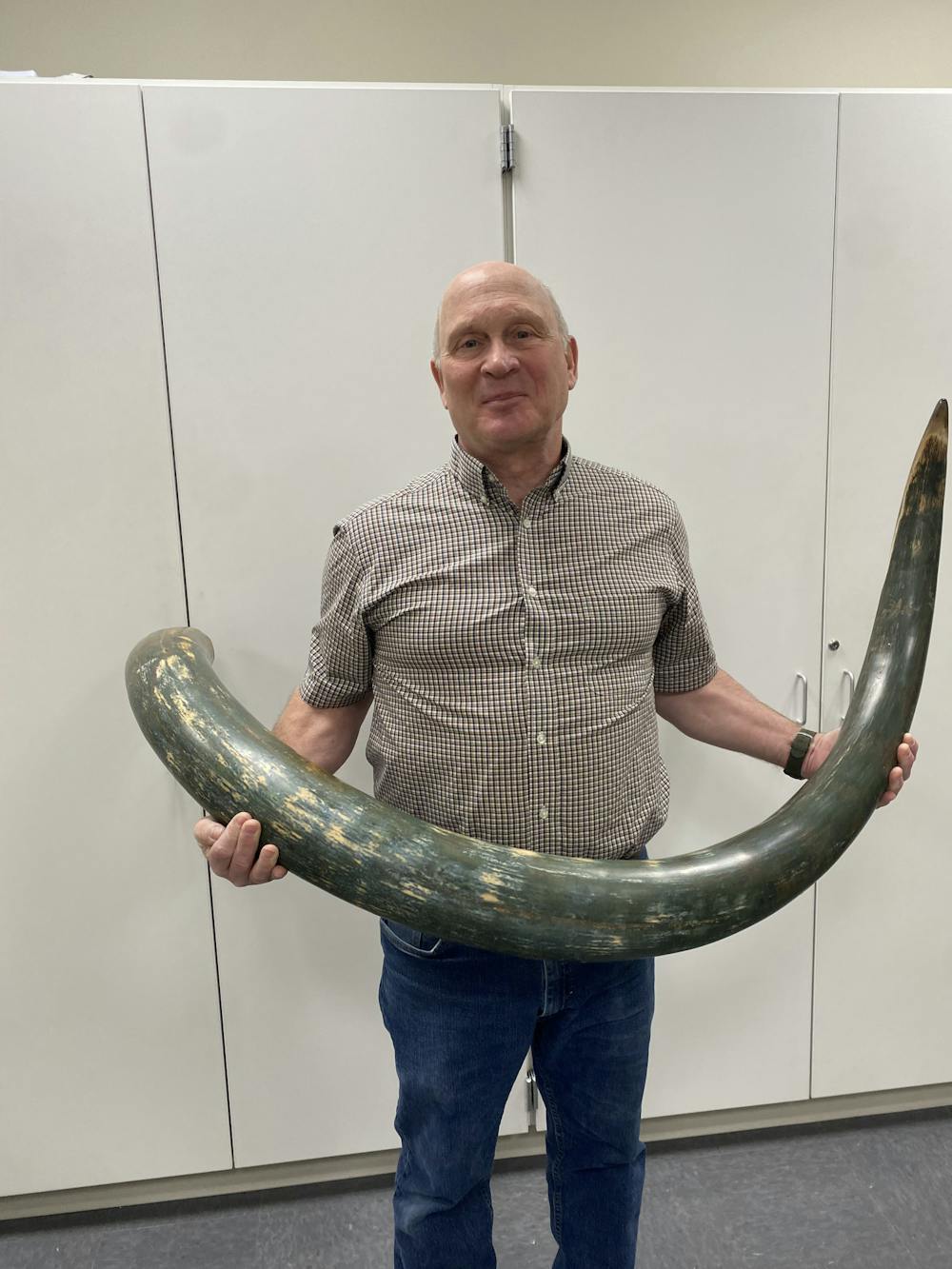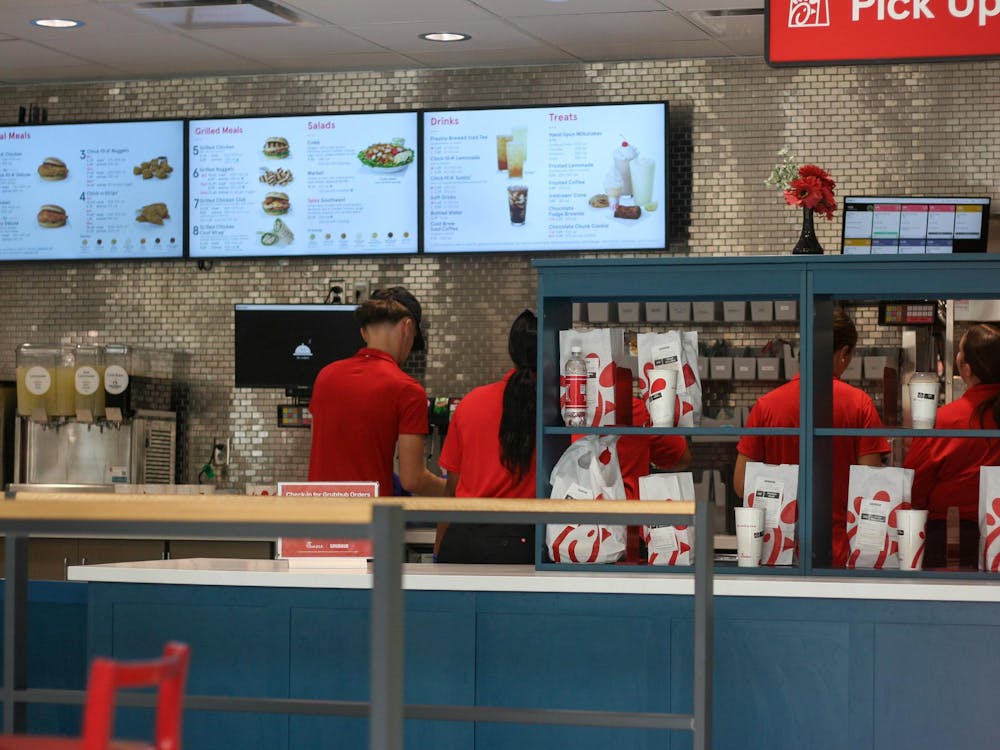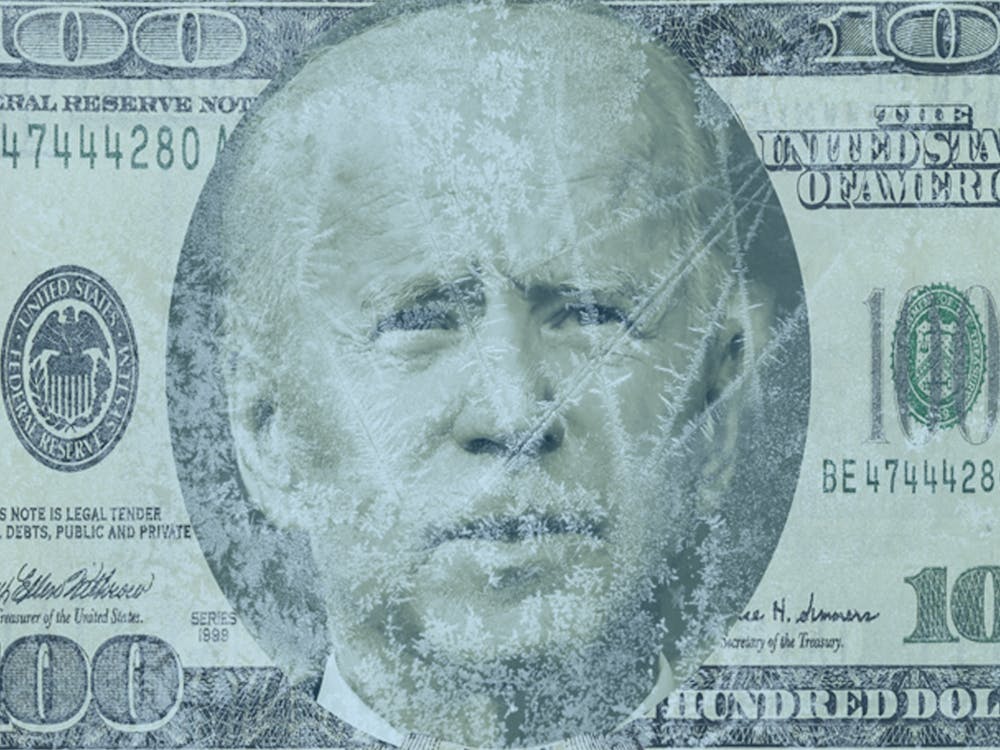Since its establishment in 1968, the Karl E. Limper Geology Museum has sought to support the learning of geology for undergraduate students at Miami University. Located on the first floor of Shideler Hall, the museum appeals to those passing by with dazzling mineral and rock specimens, maps and fossils behind glass windows.
Behind the scenes, the acquisition and display of specimens for student learning is a journey in itself.
Specimens that assist with this learning are often acquired through donation, purchase and the work of students and faculty. Recent additions include various woolly mammoth fossils and a glacial deposit that’s around 2.3 billion years old.
The mammoth fossils, and many other specimens in the museum, are donations from Miami alumnus and lifelong collector Walter Gross III. According to Kendall Hauer, director of the museum, Gross’s high-quality, large donations have greatly improved the museum.
The woolly mammoth tusk donated by Gross measures roughly seven feet long from root to tip. Along with the tusk, Gross donated a woolly mammoth humorous and mandible.
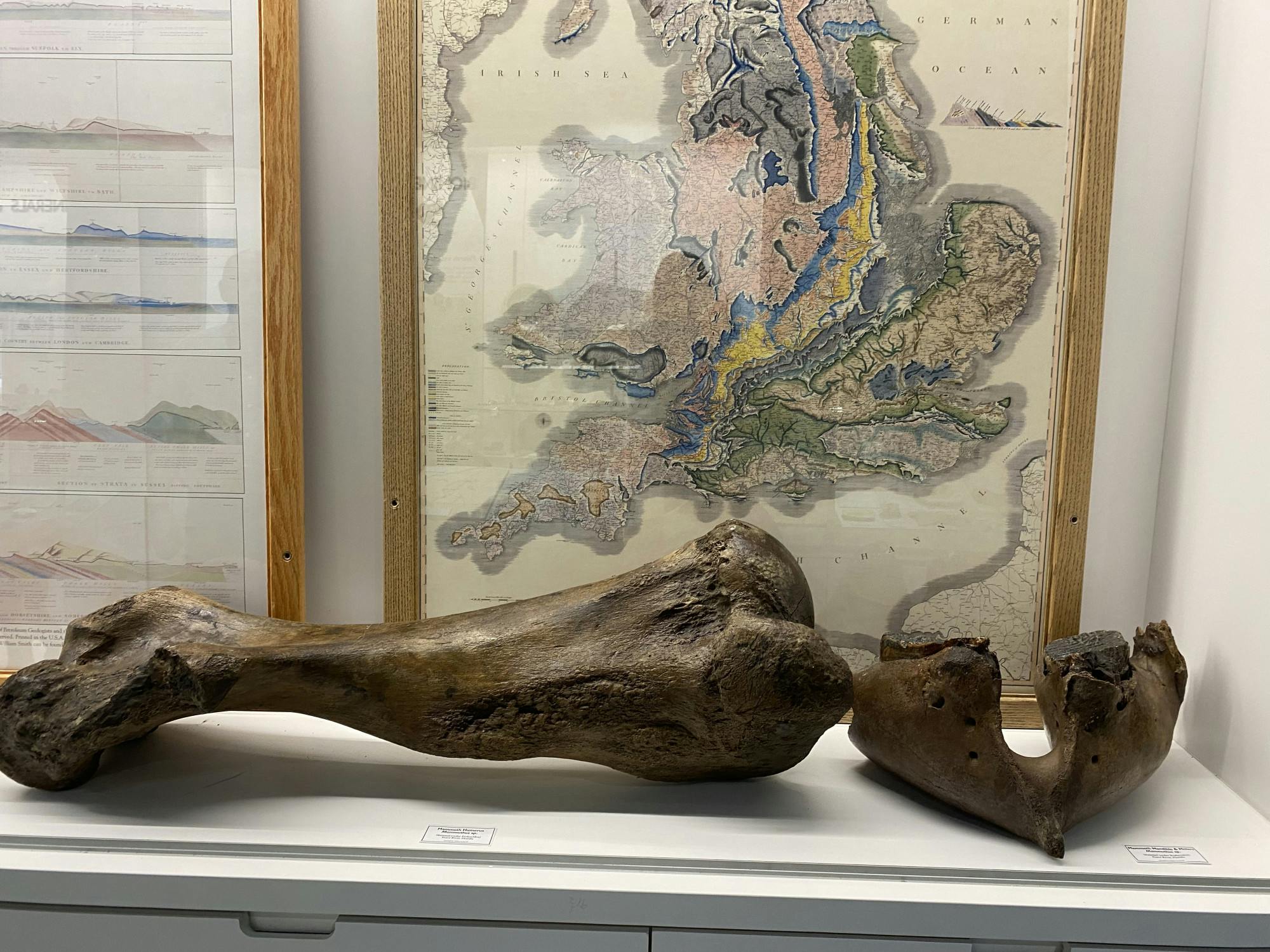
A woolly mammoth humorous and mandible on display in the museum gallery.
“I’ve gotten to see the woolly mammoth tusk,” Sophia Ioli, a junior geology major and student assistant at the museum, said. “It’s really cool.”
Hauer said that although Gross didn’t major in the subjects, he had a love for geology and paleontology as a student at Miami. Gross began donating around 2017, when the museum was reopened following Shideler Hall’s renovation, and has provided them with pieces that they wouldn’t have access to otherwise.
“His donations have elevated the nature of the museum, of what we’re able to display, tremendously,” Hauer said.
Another recent addition, the 2.3 billion-year-old glacial deposit, was purchased from the dissolved geology department of Wittenberg University. The museum will also be getting mineral specimens from Wittenberg’s collection, which are local to Ohio and adjacent states.
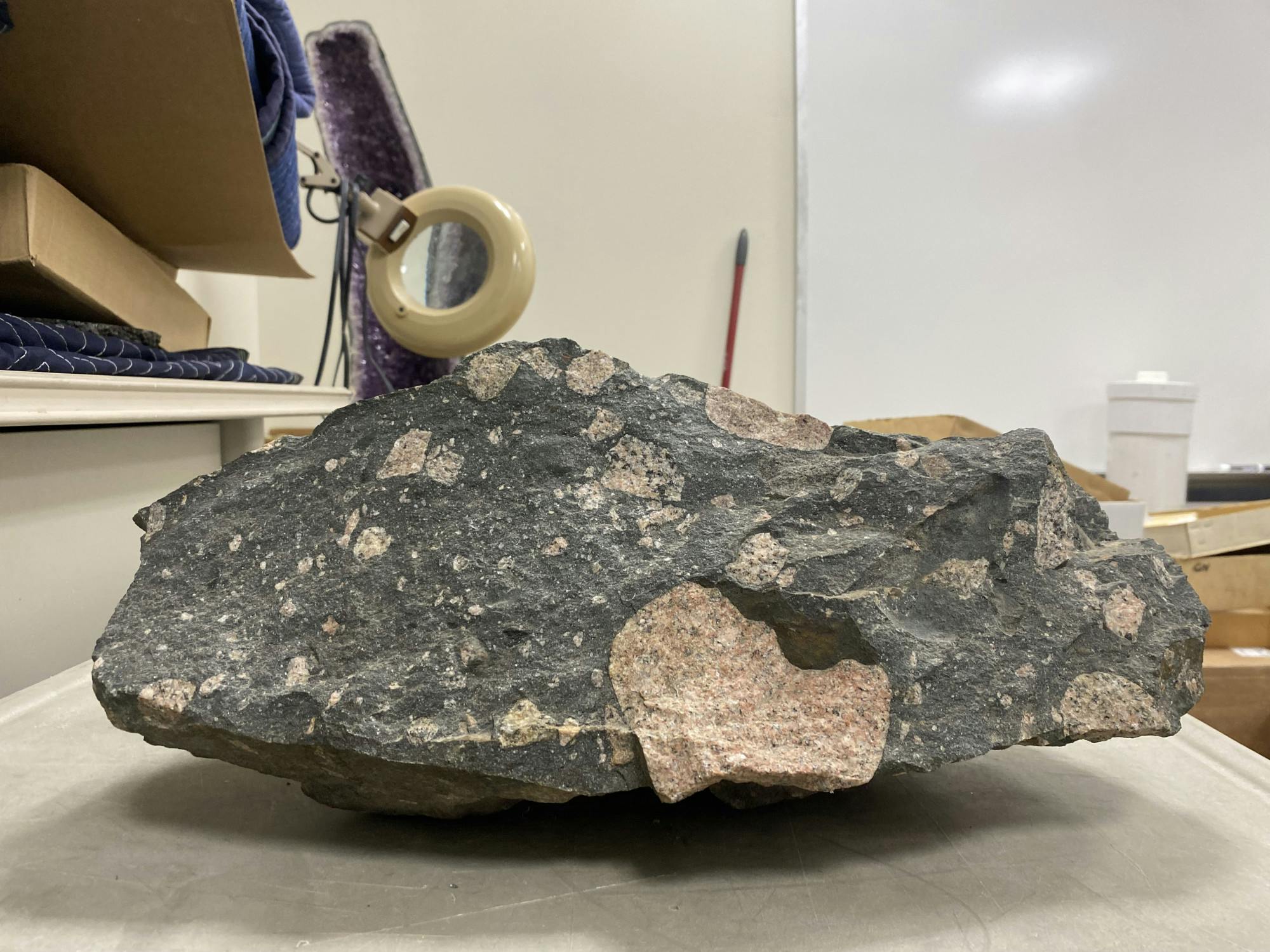
“We’re also trying to really build our significance with respect to Ohio minerals,” Hauer said.
Enjoy what you're reading?
Signup for our newsletter
Hauer said the museum looks for pieces that are relevant to the Ohio area, and to the teaching missions of Miami. When creating displays in the museum, Hauer tries to cover the main themes of modern geology.
The specimens in the museum are used by both introductory and upper-level courses, and the additional teaching collections facilitate hands-on student learning in labs. For example, if a class is studying a certain family of rocks, they’re often able to observe specimens that represent that group.
“The main mission of the museum is to support the learning of our undergrad students here,” Hauer said.
The museum strives to help students learn, and a few students have gained hands-on experience working with the museum. Ioli has helped out at the museum for a little over a year and has recently been cataloging mineral specimens. She said she’s enjoyed her experience there so far, as it has allowed her to see new things and meet new people.
“I enjoy spending time looking at the specimens and getting to see things that I wouldn’t have seen otherwise,” she said.
Hauer also points out that the museum and its collections are a product of decades of work by Miami faculty and students. Geology, in some capacity, has been taught at Miami since the 1800s.
William Shideler began collecting late Ordovician marine invertebrates, local to Ohio, in the early 1900s, which according to Hauer has greatly impacted the museum. Faculty today often continue this mission of adding to the museum by donating specimens, or even whole collections, of fossils and minerals.
“It’s been a lot of faculty effort,” Hauer said.
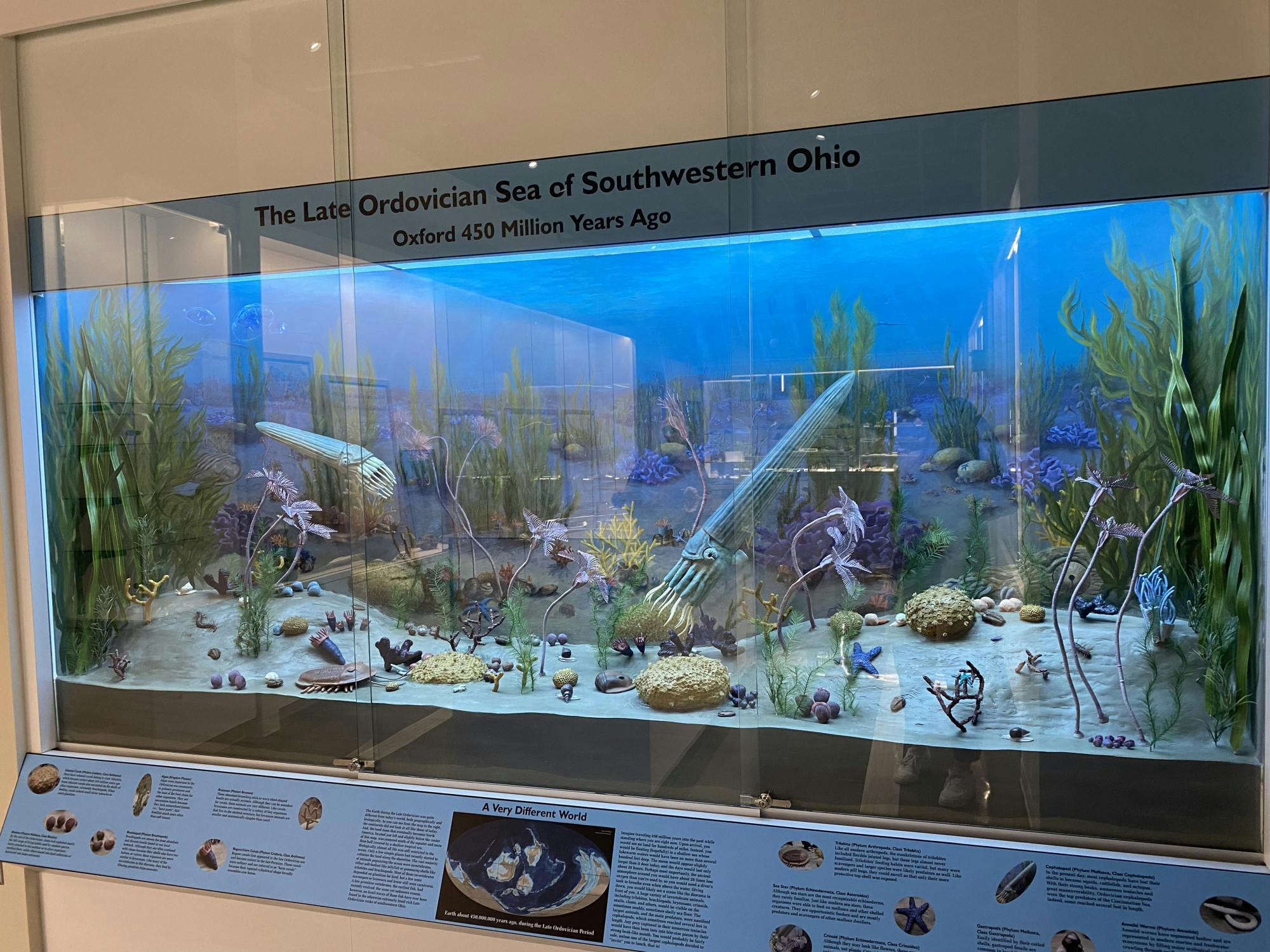
A late Ordovician sea display embedded into the wall.
Today, the museum possesses about 150,000 of the late Ordovician marine invertebrate fossils that Shideler led the charge in collecting around 100 years ago – their biggest collection of all.
As time passes and the museum works to acquire new specimens, or receives them from those who enjoy donating, students and faculty can expect to see cases and displays filled with new additions – showcasing a history of both geology and collaboration.

